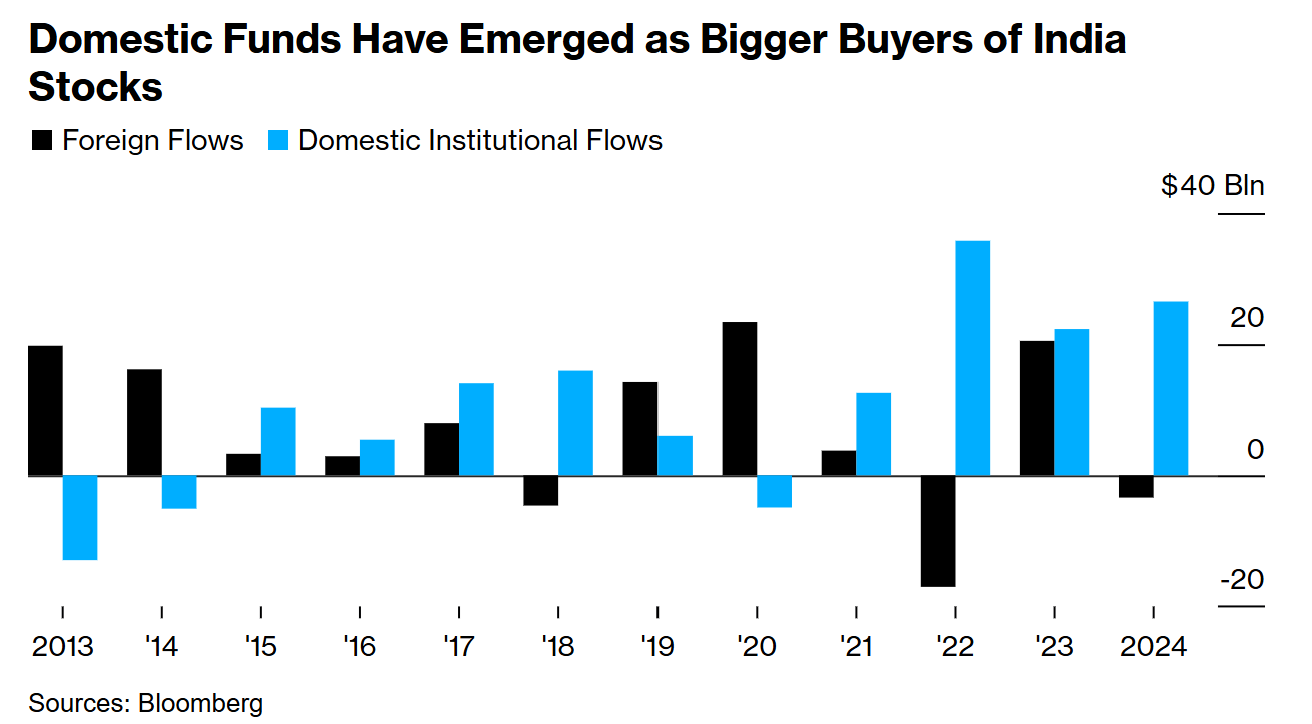From Ukraine to India and much more
This week we start with Ukraine before moving to India's stock market & demand for Indian bonds. Finally, do you know that human beings almost went extinct 900,000 years ago?
Bond holders turn down Ukraine’s request
Ukraine has called on international bondholders to agree to substantial reductions in the value of over $20 billion in debt.
In June’2024, the bondholders rejected Ukraine’s request to slash the value of its foreign currency bonds by up to 60%.
A committee representing roughly 20% of the bonds suggested reductions of just over 22%.
Following Russia's invasion in early 2022, bondholders granted Kyiv a two-year moratorium on payments, which is due to expire in August.
Ukraine seeks over $5 billion in debt relief from bondholders in the coming year, anticipating a budget deficit of approximately $43 billion to fund the war.
This deficit will be partly supported by $5.4 billion in additional IMF loans and over $28 billion in other official aid.
A 401(k) moment of Indian stock market?
India's stock market value has surpassed $5 trillion for the first time, joining the elite group of markets alongside the US, China, Japan, and Hong Kong.
Achieving this milestone, India took approximately six months to add the most recent $1 trillion to the capitalization of companies listed on its exchanges.
A notable factor in this growth has been the significant participation of young Indian investors in equity markets.
Domestic funds, including banks and insurers, have purchased over $26 billion in shares this year, while foreign investors have sold approximately $3.4 billion.
This shift highlights that foreign institutional investors, who once dominated the market, are no longer the sole driving force.
The recent developments in India's stock market could indeed be seen as analogous to the 401(k) moment in the United States.
The surge in market value to over $5 trillion, driven significantly by domestic participation, mirrors the transformative impact that the introduction of 401(k) retirement plans had on the US equity markets.
The increased engagement of millions of young Indian investors, along with substantial investments from local funds, indicates a broader and more democratized participation in the stock market.
This shift suggests a pivotal moment in India's financial landscape, akin to the widespread adoption of 401(k) plans that revolutionized retirement savings and investment patterns in the US.
Demand for Indian bonds increase
Ashmore is among several global investors, including BlackRock Inc. and Zurich-based Vontobel Asset Management, turning their attention to Indian bonds in anticipation of their inclusion in JPMorgan's index on June 28.
This shift is projected to draw up to $40 billion in foreign investments.
Since JPMorgan's announcement in September 2023, Indian sovereign bonds have attracted approximately $9.5 billion in inflows into the Fully Accessible Route (FAR) securities, which have no restrictions for foreign investors.
Government statistics indicate that overseas investment in Indian sovereign bonds has surged by $10 billion since the September announcement, reversing the trend of net outflows from 2020 to 2022.
This influx has propelled Indian bonds to the top rankings in Asia this year. Additionally, India's foreign exchange reserves reached a peak in June.
However, foreign investors in India still encounter challenges such as complex documentation and tax regulations.
Interest earned from bonds is subject to a tax rate of up to 20%, along with double-digit levies on any capital gains.
Furthermore, Bloomberg Index Services Ltd. plans to include India in its emerging markets index starting in January 2025.
Human beings almost went extinct 900,000 years ago, then survived for 117,000 years without any growth in population
A recent study published in Science reveals that human ancestors in Africa faced near extinction approximately 900,000 years ago. This research indicates a severe population decline long before the emergence of Homo sapiens.
The breeding population dwindled to just 1,280 individuals and remained stagnant for 117,000 years.
During the Early-Middle Pleistocene transition, a period characterized by drastic climate changes and prolonged glacial cycles, the fossil record in Africa and Eurasia between 950,000 and 650,000 years ago is notably sparse.
The discovery of this population bottleneck may elucidate the gaps in the chronological fossil record from this era.
The harsh climate conditions in Africa, marked by extended droughts, could have driven human ancestors to the brink of extinction and spurred the evolution of new human species.
Despite this, the mechanisms through which our ancestors survived and eventually thrived remain uncertain.
The survival of this small group suggests they occupied a highly localized area with strong social cohesion.
The surprising duration of their survival implies a stable environment with adequate resources and minimal external stresses.
This population bottleneck likely had a significant impact on human genetic diversity, influencing key characteristics of modern humans, such as brain size.
Researchers reconstructed ancient population dynamics using genetic data from present-day humans. By creating a detailed family tree of genes, the team was able to precisely identify crucial evolutionary events.






